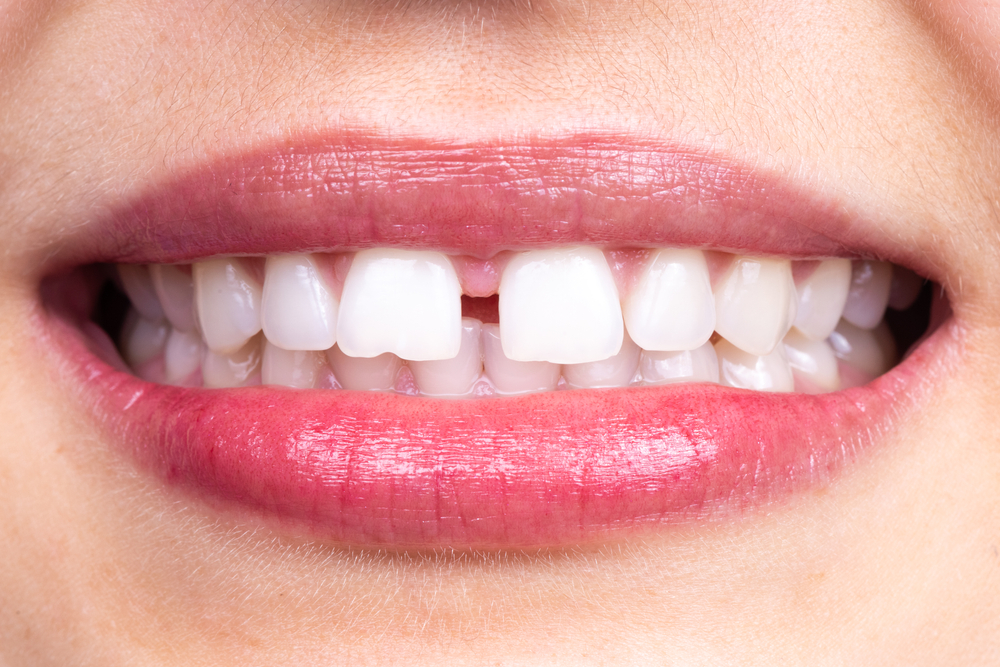Whether you love it or hate it, that space between your teeth has a name. A diastema is a gap between two teeth. Many celebrities are famous for their midline diastema, or space between their two upper front teeth.
Diastemas are extremely common, especially among children. A diastema is a natural part of a child’s development and may correct on its own. In fact, up to 97 percent of children have diastemas, and that number significantly decreases as children grow and these spaces close up naturally. If a diastema remains after the eruption of adult teeth, it will become permanent and can only be corrected with professional diastema treatment.Diastema Causes
There are several reasons that permanent diastemas form. A diastema is often the result of a discrepancy between the size of the jaws and the size of the teeth. Crooked teeth usually come from overcrowding, where the teeth are too big for the jaw. The opposite is true for a diastema — teeth that are too small for the jaw may have gaps between them. Diastemas may also be caused by missing teeth, undersized teeth or bad oral habits, such as excessive thumb-sucking.
A midline diastema can also be caused by a large labial frenum. Frenum is the tissue that connects your lips and gum. Place your tongue between your front teeth and lip, reaching the uppermost part of your mouth. The tissue you feel protruding in the center is your upper labial frenum. When that tissue is too large, too wide or too tight, it can cause a diastema between your two front teeth.Diastema Closure
Diastemas usually cause no complications to your dental health, but many people choose diastema closure for cosmetic purposes. There are several types of diastema treatment available today:
Dental Braces — Most diastemas require a full set of dental braces and retainer therapy, as moving one tooth can affect the placement of the rest.
Removable Dental Braces — For less severe cases, a less invasive diastema treatment such as Invisalign® may work.
Cosmetic Dentistry — If a midline diastema is the only dental problem, veneers or dental bonding may be used to cover the space.
Missing Tooth Replacement — If a diastema is caused by a missing tooth, a dental bridge or dental implants may be used to correct the problem.
Dental Surgery — In the case where a large labial frenum is the cause of your diastema, dental surgery may be needed prior to orthodontic treatment. Your dentist or orthodontist may perform a frenectomy, which removes or loosens the tissue and prepares the space for diastema closure.Preventing a Diastema
If you are genetically predisposed to a diastema or midline diastema, you will not be able to prevent it — your only option is to correct it with one of the diastema treatments listed above. If your child has a diastema in his or her baby teeth, odds are good that diastema closure will happen on its own. Regardless, the American Dental Association recommends that children visit an orthodontist by the age of 7. While treatment usually starts later, an early evaluation can help spot problems and determine the most effective diastema treatment as permanent teeth emerge. It’s also important to take good care of baby teeth — teeth that are lost too early to tooth decay can cause adult teeth to shift as they erupt and diastemas to form permanently.
You may not be able to prevent a diastema, but it is easily treatable. If you have a diastema, you should discuss your diastema treatment options with your dentist.

